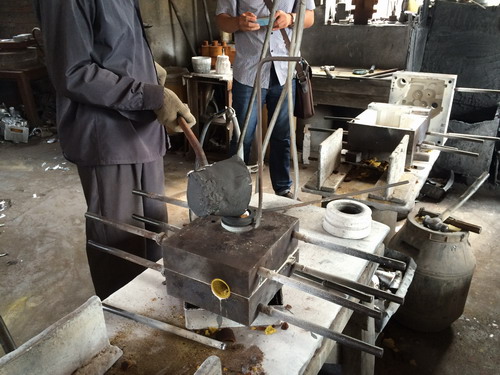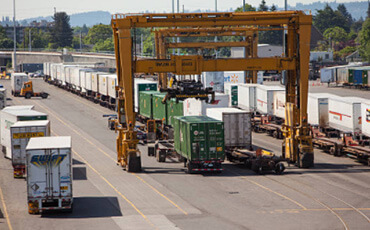
Carbon Steel vs Cast Steel – Knowing the Difference
May 17, 2021
The Manufacturing Process of Die Casting
July 19, 2021Guide to Permanent Mold Casting
The permanent mold casting process in an intricate method of investment casting that shares some similarities to both sand casting and die casting. During this process, reusable molds, or permanent molds, that are usually made from metal are used. This method is also called gravity casting because the molten metal is generally poured into the die with the use of gravity.
The permanent mold casting process begins with the preparation of the mold by the investment casting manufacturer, based on the requirements from the end user. At Intercast, we work closely with our partners to find the right solution for their needs, often building relationships over many years and contributing our expertise to find the most effective mold for your needs.
After the mold has been prepared, it is assembled by clamping together the two mold halves and cores together. With our design flexibility capabilities, we are able to design almost any type of shape or configuration, whether your mold is simple or complex.
After Mold Preparation
Once the mold has been prepared and assembled, the molten metal is poured from a ladle into the top of the mold, flowing through a runner system down into the mold cavity. Then, the metal is allowed to cool inside the mold, which helps it to solidify before the mold is opened. After the mold has been opened and cooled, the excess material is cut away to solidify and complete the mold.
There are some other forms of permanent mold castings that can be used in specific situations. The slush casting process is used to create hollow parts without the use of cores, as slushy material that has not yet completely solidified is poured out of the mold when the desired wall thickness is reached.
Low-pressure casting is completed by forcing the mold via low-pressure air rather than the use of gravity, which can reduce shrinkage during the cooling process. Finally, vacuum mold casting uses vacuum pressure to fill the mold.
There are many advantages to using permanent mold casting techniques to create an investment cast. The largest advantage is that once the process is complete, you have a reusable mold with a good finish, dimensional accuracy, and high rates of production. This type of process can be both efficient and effective for high production runs, creating repeatable results.
Another advantage is the ability to easily change the mold wall thickness to help in the solidification process. Also, fast cooling rates create a fine grain structure that is superior to sand casting. This intricate process can provide many advantages when done by an experienced investing casting company.
At Intercast, our team boasts over 60 years of quality experience to help create a mold that will help you grow your business. We also own the entire process, beginning with our world-class foundry, which operates as a maquiladora. Contact us today to request a quote and let us help you grow your business in a cost-effective manner.





